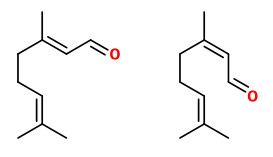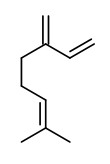Dies ist eine alte Version des Dokuments!
Cymbopogon citratus Stapf - Poaceae - lemongrass, Westindisches Zitronengras, Lemongras
„Perennial, shortly rhizomatous. Culms tufted, robust, up to 2 m tall, ca. 4 mm in diam., farinose below nodes. Leaf sheaths glabrous, greenish inside; leaf blades glaucous, 30-90 × 0.5-2 cm, both surfaces scabrid, base gradually narrowed, apex long acuminate; … This species (Lemon Grass), known only from cultivation, is grown on a large scale in parts of tropical Asia and South America for the lemon-scented oil extracted from its leaves. The oil is used for both medicinal and culinary purposes. Flowers are seldom produced.“
http://www.efloras.org/florataxon.aspx?flora_id=2&taxon_id=200025088
The fresh fragrant leaves are traditionally used in cooking especially in Asia.
http://en.wikipedia.org/wiki/Cymbopogon_citratus
Cymbopogon citratus and Cympogon flexuosus are the source of lemongrass oil, which is valued for its citral content, with fresh, strongly citrusy, lemon-like and pungent odor. Lemongrass oil from various origins contained mainly geranial (10-62%) and neral (3-38%), together with geraniol (0.1-40%), and myrcene (0.1-21%).
[Boelens, Mans H. „Sensory and chemical evaluation of tropical grass oils.“ Perfumer & flavorist 19.2 (1994): 29-45]
„The leaves contain up to 1.5% (d.wt) essential oils with a typical lemon-like aroma, … The major components of the essential oil, as determined by hydrodistillation followed by gas chromatography and mass-spectrometry were citral (41% geranial and 30% neral), myrcene (15%), geraniol (5%), and lower levels of nerol and other volatiles (0.5%).“
[Histochemical Localization of Citral Accumulation in Lemongrass Leaves
(Cymbopogon citratus (DC.) Stapf., Poaceae). Efraim Lewinsohn, Nativ Dudai, Yaakov Tadmor, Irena Katzir, Uzi Ravid, Eli Putievsky Daniel M. Joel, Annals of Botany 81: 35-39, 1998] [http://aob.oxfordjournals.org/content/81/1/35.full.pdf+html]]
Lemongrass extracted with supercritical carbon dioxide at 23-50°C and 85-120 bar aforded essential oils with geranial (44.6-53.0%), neral (26.6-32.6%) and myrcene (1.0-9.9%) as main components and geraniol (1.8-3.2%), linalool (0.8-1.2%), neryl acetate (0.2-1.7%), geranyl acetate (0.2-0.8%), and 2-undecanone (0.4-0.7%) eg as minor constituents.
[Extraction of lemongrass essential oil with dense carbon dioxide., Carlson, L.H.C., Machado, R.A.F., Spricigo, C.B., Pereira, L.K., Bolzan, A., The Journal of Supercritical Fluids, 21(1), 2001, 33-39]
Extraction of dried and ground leaves of lemon grass with supercritical CO2 was more effective (yield 0.65%) than hydrodistillation (yield 0.43%). Citral represented more than 68% of the extraxt (hydrodistillation 73%).
[Comparative analysis of the oil and supercritical CO2 extract of Cymbopogon citratus Stapf., Marongiu, B., Piras, A., Porcedda, S., Tuveri, E., Natural product research, 20(05), 2006, 455-459]
„Five constituents, which accounted for 96.3% of the oil, were identified in the EO of C. citratus. Geranial (48.1%), neral (34.6%) and myrcene (11.0%) were the major constituents.“
[Chemical composition and antimicrobial activity of Cymbopogon citratus and Cymbopogon giganteus essential oils alone and in combination., Bassolé, I.H.N., Lamien-Meda, A., Bayala, B., Obame, L.C., Ilboudo, A.J., Franz, C., Dicko, M.H., Phytomedicine, 18(12), 2011, 1070-1074]
„The antiviral effect of 12 essential oils on herpes simplex virus type-1 (HSV-1) replication was examined in vitro. The replication ability of HSV-1 was suppressed by incubation of HSV-1 with 1% essential oils at 4°C for 24 hr. Especially, lemongrass completely inhibited the viral replication even at a concentration of 0.1%, and its antiviral activity was dependent on the concentrations of the essential oil. When Vero cells were treated with the essential oil before or after viral adsorption, no antiviral activity was found, which suggests that the antiviral activity of essential oils including lemongrass may be due to the direct interaction with virions.“
[The Inhibitory Effect of Essential Oils on Herpes Simplex Virus Type‐1 Replication In Vitro. Minami, M., Kita, M., Nakaya, T., Yamamoto, T., Kuriyama, H., Imanishi, J., Microbiology and immunology, Vol.47(9), 2003, 681-684]
The essential oil of the leaves exhibited antifungal activity against Aspergillus fumigatus and A.niger.
[Antifungal Activity of Essential Oils from Indian Medicinal Plants Against Human Pathogenic Aspergillus fumigatus and A. niger. Sunita Bansod, Mahendra Rai, World Journal of Medical Sciences 3 (2): 81-88, 2008] http://idosi.org/wjms/3(2)08/7.pdf
Citral and the leaf extract of C. citratus significantly reduced the spontaneous, ACh- and KCl-induced contractions of isolated rabbit ileum. Citral almost abolished the effect of increasing strength of contraction of added CaCl2, while the leaf extract shifted the calcium concentration-response curve to the right, suggesting a calcium antagonistic effect.
[Spasmolytic effect of citral and extracts of Cymbopogon citratus on isolated rabbit ileum., Devi, R.C., Sim, S.M., Ismail, R., Journal of Smooth Muscle Research, 47(5), 2011, 143-156]

Cymbopogon citratus (DC.) Stapf as Andropogon citratus DC.
Kirtikar, K.R., Basu, B.D., Indian medicinal plants, Plates, vol. 5: t. 1018 (1918)
http://plantgenera.org/species.php?id_species=305393


